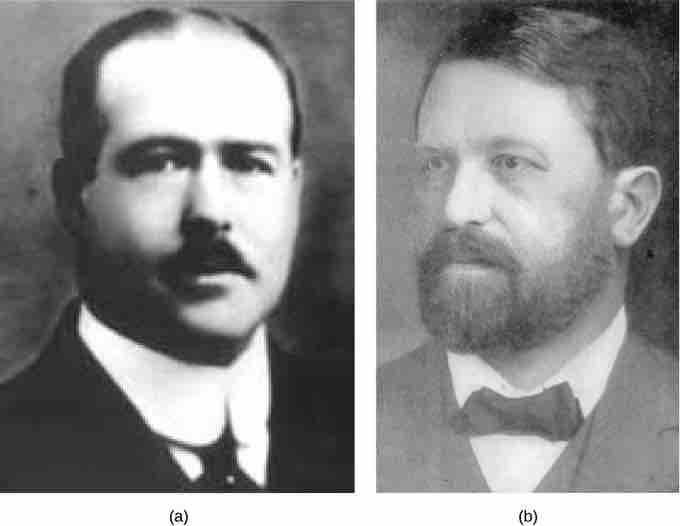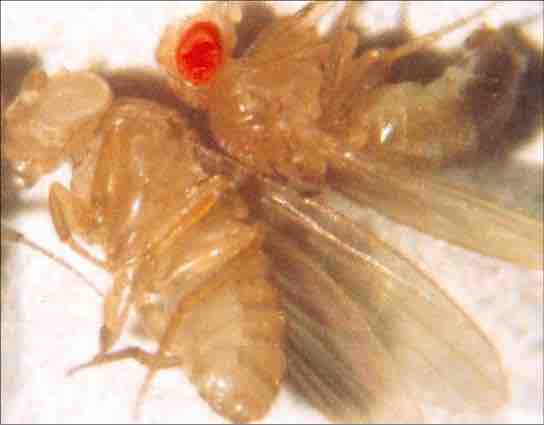Chromosomal Theory of Inheritance
The speculation that chromosomes might be the key to understanding heredity led several scientists to examine Mendel's publications and re-evaluate his model in terms of the behavior of chromosomes during mitosis and meiosis. In 1902, Theodor Boveri observed that proper embryonic development of sea urchins does not occur unless chromosomes are present. That same year, Walter Sutton observed the separation of chromosomes into daughter cells during meiosis . Together, these observations led to the development of the Chromosomal Theory of Inheritance, which identified chromosomes as the genetic material responsible for Mendelian inheritance.

Sutton and Boveri
(a) Walter Sutton and (b) Theodor Boveri are credited with developing the Chromosomal Theory of Inheritance, which states that chromosomes carry the unit of heredity (genes).
The Chromosomal Theory of Inheritance was consistent with Mendel's laws and was supported by the following observations:
- During meiosis, homologous chromosome pairs migrate as discrete structures that are independent of other chromosome pairs.
- The sorting of chromosomes from each homologous pair into pre-gametes appears to be random.
- Each parent synthesizes gametes that contain only half of their chromosomal complement.
- Even though male and female gametes (sperm and egg) differ in size and morphology, they have the same number of chromosomes, suggesting equal genetic contributions from each parent.
- The gametic chromosomes combine during fertilization to produce offspring with the same chromosome number as their parents.
Despite compelling correlations between the behavior of chromosomes during meiosis and Mendel's abstract laws, the Chromosomal Theory of Inheritance was proposed long before there was any direct evidence that traits were carried on chromosomes. Critics pointed out that individuals had far more independently segregating traits than they had chromosomes. It was only after several years of carrying out crosses with the fruit fly, Drosophila melanogaster, that Thomas Hunt Morgan provided experimental evidence to support the Chromosomal Theory of Inheritance.
In 1910, Thomas Hunt Morgan started his work with Drosophila melanogaster, a fruit fly. He chose fruit flies because they can be cultured easily, are present in large numbers, have a short generation time, and have only four pair of chromosomes that can be easily identified under the microscope. They have three pair of autosomes and a pair of sex chromosomes. At that time, he already knew that X and Y have to do with gender. He used normal flies with red eyes and mutated flies with white eyes and cross bred them. In flies, the wild type eye color is red (XW) and is dominant to white eye color (Xw) . He was able to conclude that the gene for eye color was on the X chromosome. This trait was thus determined to be X-linked and was the first X-linked trait to be identified. Males are said to be hemizygous, in that they have only one allele for any X-linked characteristic.

Eye Color in Fruit Flies
In Drosophila, the gene for eye color is located on the X chromosome. Red eye color is wild type and is dominant to white eye color.